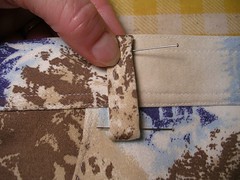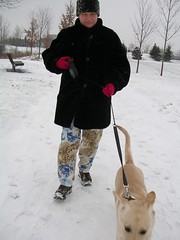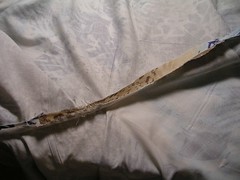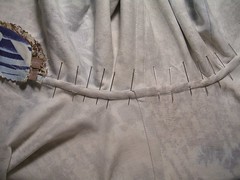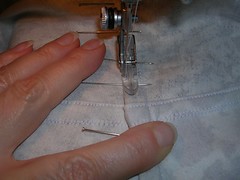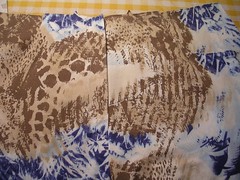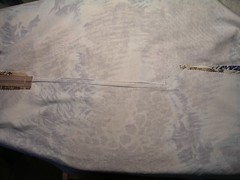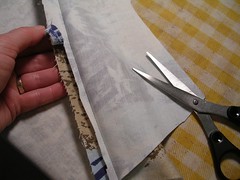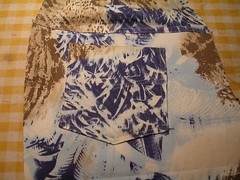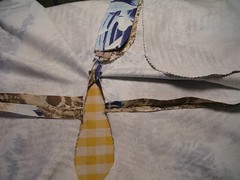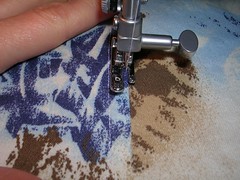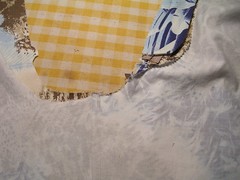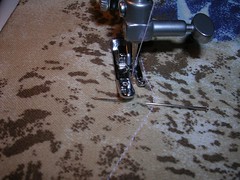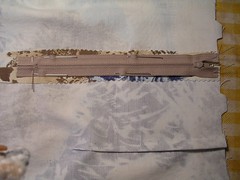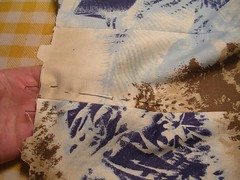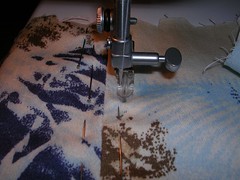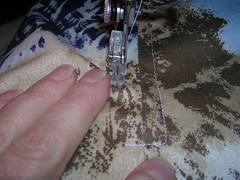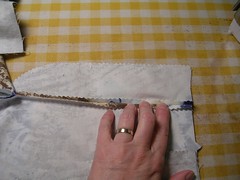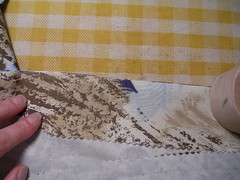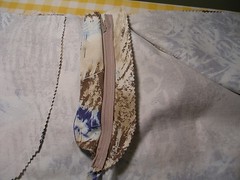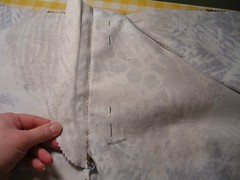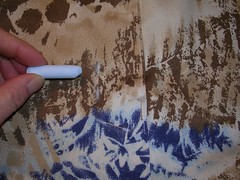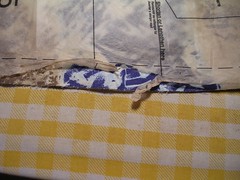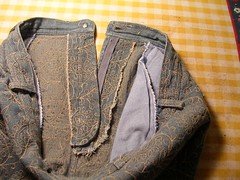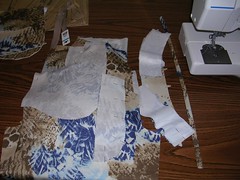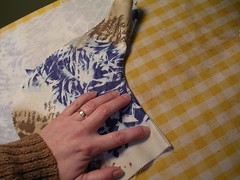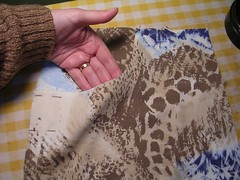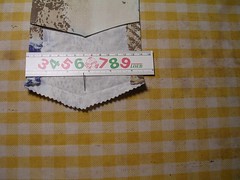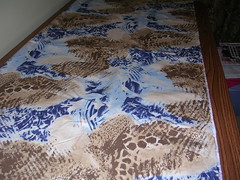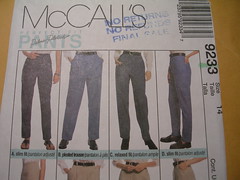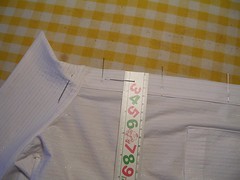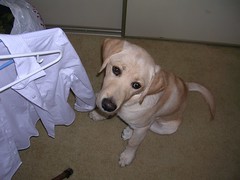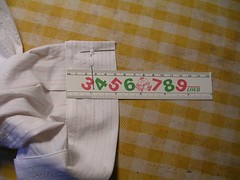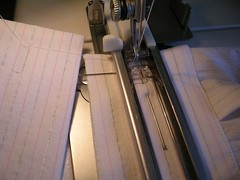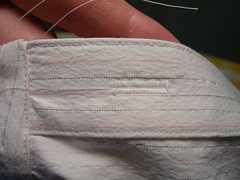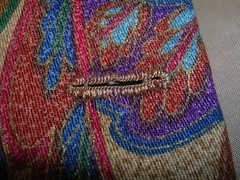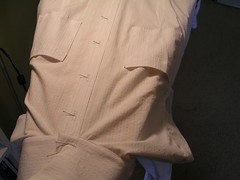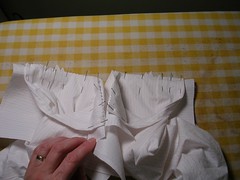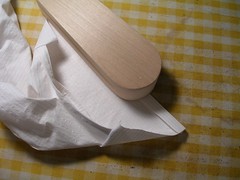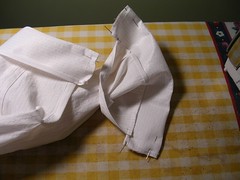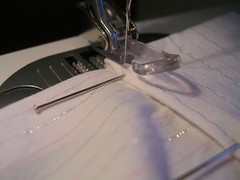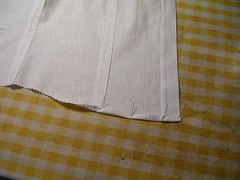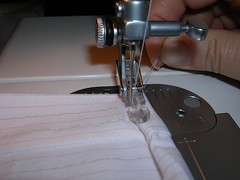Zooming ahead, I want to get these pants and skirt DONE. I have bottle bags to make for Christmas and maybe a few fleece things, never mind my next “real project”, and as usual, I get impatient soon after I start a project and this one is more than due to be done.
I decided to fell the side seams one way, instead of doing the modified flat fell. In fact, if you look at a pair of jeans you have, you will probably find that the side seams are serged. Can you imagine! Anyway, I am felling mine but only with one line of stitching. These pants are made with wacky, cheap fabric and I am not going to waste time, thread and patience doing two lines of stitching. I am falling the seam toward the back and it gets a little tricky at the pocket area. I have a photo showing how I am trimming the seam allowances away at that point. The front of the pants is at the top of the photo. That front part of the seam allowance will be folded over the back, cut-away part. Because there are four layers of fabric at the pocket on the side seam, you have to trim them away strategically to reduce bulk. Make sure you leave enough of the seam allowance to successfully fold it over the trimmed part.
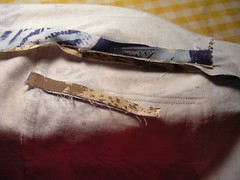
Once you have trimmed it, you need to iron over the fold. Use a sleeve board for this manoeuver. (I like the spelling with the “o” in it.) I start at the bottom of the leg and move up, unwrinkling the leg as I go. Use the clapper to get that good, solid crease so you don’t have to use pins. Pins will only end up jabbing you at some point and if you can avoid that, I would.
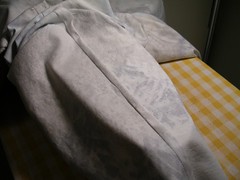
Once you have done all the prep work, turn the legs right side out. You will start sewing at the waist end and gradually sew down into the tube of the leg, ending at the bottom of the leg. This is slow going and you must be patient. You have to sew about two inches at a time, pausing - with the needle down in the fabric so it doesn’t move! - and making sure the fabric is not bunching up under the presser foot and that the folded over seam allowance is flat against the rest of the fabric.
In the first photo, I am at the top of the pants and the back is on your left (you can see the stitching for the back pockets). You can see that the folded over seam allowance has come unfolded. Not to panic. As you sew slowly, you can tuck this back under before it gets to the presser foot and needle. (That extra line of stitching that you can see in the seam allowance is where I machine basted the pockets to the pants.)
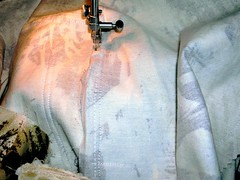
In the next photo, I have sewed all the way to the bottom of the pants leg and the leg is bunched up around the needle, forming a “well”. Because I am not doing a modified flat fell, I finish at this point and cut the threads.
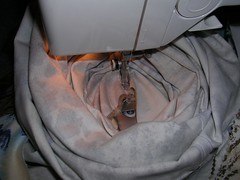
Okay, back to the skirt. I have sewed the facing on around the waist. After I pressed the seam allowance toward the facing, I “under stitched” it to the facing. This makes everything lie flatter, as well as it prevents the facing from rolling out toward the right side of the skirt. Now it needs to be tacked down. You can labour over this by hand or you can do it quickly by machine and it looks better and lasts longer. Fold the facing over to the inside of the skirt where it belongs and pin it to the seam allowances and darts. Fold the ends under against the zipper and pin them in place. In the next photo, I have pinned everything on the wrong side of the skirt. I will then turn the skirt over and replace the pins from the right side because I am going to sew on the right side where it will show.
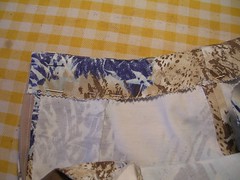
Before sewing, make sure that the upper back edges match at the zipper. You have folded under the facing at the zipper but you should make sure that when you do the zipper up, the top edges line up. This is a very easy thing to adjust at this point.
Now, sew the facing down onto the skirt, using the machine. Sew into the seam line and the dart line, which will tack the facing down at six points. At the back, sew down the line of stitching used to put the zipper in.
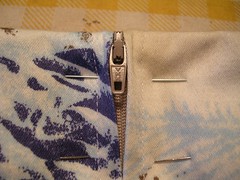
Once you have finished this, all you need to do is fold up the hem about a quarter of an inch and press it, then fold it up one more time and press it (thus folding in the raw edge). Sew the hem using a zipper foot and the skirt is DONE!
Back to the pants. We’re going to put the waistband on so that no hand sewing is involved. To do this, you have to sew it on to the wrong side (the inside) of the pants first. And before you do that, you should position the belt loops so they get sewed on nice and firmly. I have used a pair of pants I made before for the loop placement but you can use any pant that you like where the loops are. I also positioned the loops so that when they are turned up and put in their proper position, the folded edge will be seen first on the outside (where people might glance at the loops). Have a look at the photo. The two belt loops at the back are a good example. The fold is placed to the outside of the centre line and the line of stitching that makes the belt loop is placed on the inside. As well, the edges of the belt loop come together under the stitching line and one edge is slightly inside the other, allowing you to see both edges. I put that side on what will be the inside of the belt loop so you won’t see it either. It’s the little things that can make a difference (even on wacky pants)!
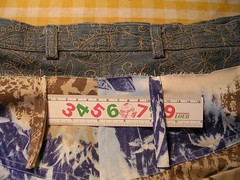
In the next photo, I have pinned the right side of the waistband to the wrong side of the top of the pants. I have left a seam allowance of 5/8 inch at either end to make the ends square.
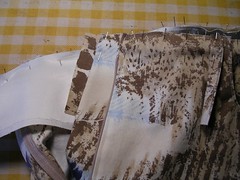
In the next photo, I have sewn the waistband to the pants and sewn the ends square and turned them right side out. I have also ironed under the long raw edge and trimmed it and then pinned that folded edge over the line of stitching on the right side of the pants.
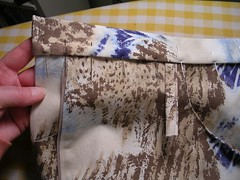
Next, I will sew down the fold using a zipper foot, sewing over the belt loops for a second time.
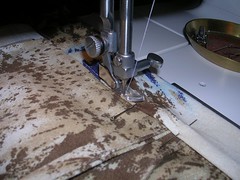
Finally, I am finishing the belt loops. To do this, you have to tack them down at the bottom of the loop, onto the pants body. To gauge where to do this, fold over the top end and then fold up the loop into its final place (it’s a little more than a quarter inch down). Stick a pin in where the loop folds naturally at the bottom. This is below the bottom edge of the waistband to allow for wider belts to be used. Sew this part of the loop first. Now fold the loop up and tuck in the raw upper end and sew it to the waistband at the top edge. I go back and forth a few times to make sure it is tacked on firmly.
